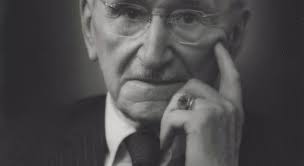
The curious task of economics is to demonstrate to men how little they really know about what they imagine they can control. — Friedrich A. von Hayek
The surprising rally in long-term bond prices – that is to say, the decline in interest rates, as bond prices and yields move inversely to each other – disadvantaged those investors unwilling to take on the additional risk entailed by the longer maturities. The 10-year US Treasury bond yield fell from approximately 2.50% to 2.00%, and the long-term Treasury bond index returned 5.71% compared to 1.46% for the short-term US treasury sector. With interest rates already at historically low levels going into the second quarter, we were reluctant to increase clients’ exposure to long-term bonds. We believe that holding the shorter maturities will eventually work to our advantage when the declining interest rate trend inevitably reverses.
It is somewhat of an understatement to characterize interest rates as being at “historically low levels.” That expression might lead one to think that rates have plunged, say, to 1990 levels, or maybe 1950 levels, or maybe even 1850 levels. In fact, economic historians tell us that current rates are now at essentially 5000-year lows. https://www.businessinsider.com/chart-5000-years-of-interest-rates-history-2016-6?international=true&r=US&IR=T In other words, as far as scholars can determine, never in recorded human history has it cost less to borrow money, whether to finance present consumption or investment for the future, than it does now. The other side of that coin, or course, is that lenders – those who own bonds, loans, or interest-bearing securities generally — have never been paid less for handing their money over to borrowers based on a promise that it will one day, perhaps, be repaid. The central banks’ policy of ultra-low rates – incredibly, below 0% now in Europe and Japan — may have mitigated the recessionary impact of the mortgage and Euro crises, but economic growth has been sluggish in the developed world and doubts are beginning to emerge about the continued efficacy of low rates as a remedy. In fact, we are now beginning to see that the low rates engineered by central banks are having a negative effect on banks’ lending by reducing the profitability of their loan business. Again, we see the futility, noted by von Hayek, of attempting to override from above the self-regulating mechanisms of a complex system such as the global economy.
While central bank policies in the developed world have been a major factor in creating the current low rate environment, there are other factors operating, in particular with regard to longer-term rates. Economist Ed Yardeni has cited the lingering deflationary effects of the mortgage crisis, competitive pressures arising from globalization, the disruptive effects on employment arising from new technologies, and the negative effects on demand for housing and consumer products by aging populations in the developed world. http://blog.yardeni.com/2019/08/the-great-inflation-delusion.html All these factors point toward economic stagnation and a persisting low interest rate environment entailed by shrinking capital investment.
What could possibly change this dreary outlook? Global trade, driven by demand from the growing populations in the emerging economies may be one answer. But that would require a liberal global trading system — low tariffs and fair trade practices — that may or may not come into being, depending on the quality of political leadership here and abroad.
As our Great Leader likes to say: “We’ll see what happens.”
SEP

About the Author: